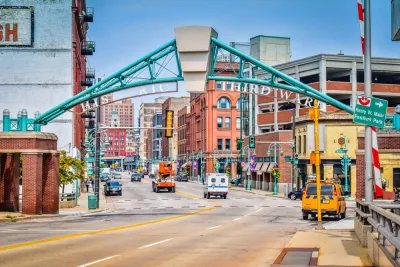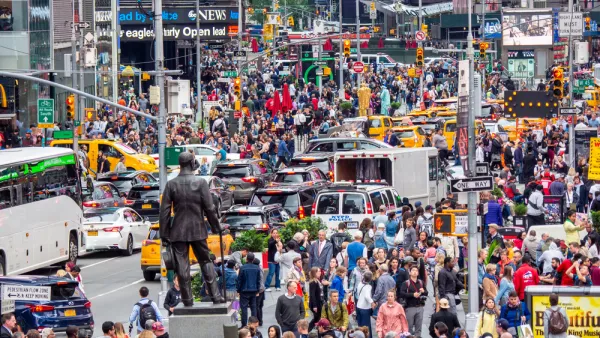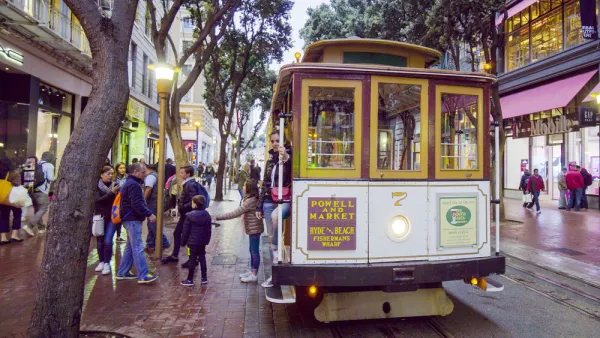The city of Milwaukee's commitment to Complete Streets is still in early stages, as a new progress report details with an eye toward the future.

The Milwaukee Department of Public Works (DPW) has unveiled a benchmark report, the first of its kind in the city, on progress toward goals for Complete Streets set in October 2019, reports Jeramey Jannene.
The city of Milwaukee adopted its Complete Streets policy with the goal to increase road safety for all users, by planning each project with the safety of not just motorists, but also "pedestrians, bicyclists and other road users, regardless of age or ability, in every street project," explains Jannene.
The report tracks the city's progress toward making those planning considerations in 2019.
The report looks at all street reconstruction, repaving or striping projects greater than a quarter-mile in length where a “substantial design change” occurred. DPW notes that 22 projects were completed in 2019. Primarily due to the timing of the policy’s October 2018 adoption and long lead time on many DPW projects, only two projects incorporated Complete Streets improvements. One of the projects was located in an [Neighborhood Revitalization Strategy Areas].
Next year's report will have plenty to talk about, notes Jannene: "A number of projects have already been implemented in 2020 that aren’t included in the report, including narrowing or removing travel lanes, shortening pedestrian crossing distances and implementing an Active Street program."
FULL STORY: How Is City Doing on Complete Streets?

National Parks Layoffs Will Cause Communities to Lose Billions
Thousands of essential park workers were laid off this week, just before the busy spring break season.

Retro-silient?: America’s First “Eco-burb,” The Woodlands Turns 50
A master-planned community north of Houston offers lessons on green infrastructure and resilient design, but falls short of its founder’s lofty affordability and walkability goals.

Delivering for America Plan Will Downgrade Mail Service in at Least 49.5 Percent of Zip Codes
Republican and Democrat lawmakers criticize the plan for its disproportionate negative impact on rural communities.

Test News Post 1
This is a summary

Test News Headline 46
Test for the image on the front page.

Balancing Bombs and Butterflies: How the National Guard Protects a Rare Species
The National Guard at Fort Indiantown Gap uses GIS technology and land management strategies to balance military training with conservation efforts, ensuring the survival of the rare eastern regal fritillary butterfly.
Urban Design for Planners 1: Software Tools
This six-course series explores essential urban design concepts using open source software and equips planners with the tools they need to participate fully in the urban design process.
Planning for Universal Design
Learn the tools for implementing Universal Design in planning regulations.
EMC Planning Group, Inc.
Planetizen
Planetizen
Mpact (formerly Rail~Volution)
Great Falls Development Authority, Inc.
HUDs Office of Policy Development and Research
NYU Wagner Graduate School of Public Service





























